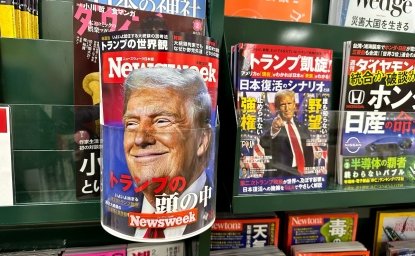Raising the Bar for Congress: Reform Proposals for the 21st Century
Statement of Donald R. Wolfensberger
Woodrow Wilson Center & Bipartisan Policy Center
Before the Senate Committee on Homeland Security & Governmental Affairs
Hearing on “Raising the Bar for Congress: Reform Proposals for the 21st Century”
Wednesday, March 14, 2012
Mr. Chairman and members of the Committee:
Thank you for the invitation to testify before you today on how to improve the institution of Congress to better equip it for the challenges of the Twenty-first Century. My name is Don Wolfensberger, and I am currently affiliated with both the Woodrow Wilson International Center for Scholars and the Bipartisan Policy Center. But the views I express here today are solely my own and not those of either institution.
I have been involved in congressional reform efforts for nearly a half-century now, dating back to my internship with my Congressman, John B. Anderson of Illinois in 1965. He had me monitor the hearings of the Joint Committee on the Organization of Congress, help prepare his testimony for that committee and a book chapter on his reform ideas. That book, titled “We Propose a Modern Congress,” was published by the House Republican Conference’s Task force on Congressional Reform and Minority Staffing. The joint committee’s work, and that of the task force, culminated with the enactment of the Legislative Reorganization Act of 1970.
I joined Congressman Anderson’s staff full time in January 1969, and continued to work on reform issues for him, mostly through his assignment on the Rules Committee. Our principal achievement during that period was the adoption of a bipartisan rules change providing for the televised coverage of House floor proceedings that began in early-1979. I subsequently served on the Rules Committee staff with Congressman Trent Lott, Congresswoman Lynn Martin, and Congressman Jerry Solomon, all of whom were interested in institutional reforms, ranging from budgeting and ethics, to committee jurisdictions and procedures, to inter-branch relations. It is perhaps fitting that the last major reform effort I worked on was with Mr. Solomon on the Joint Committee on the Organization of Congress in 1993-94—an effort that died in the House Rules Committee, but was subsequently resurrected by the new Republican majority in January 1995 and adopted on opening day of the 104th Congress.
I cite this brief history not as a matter of personal pride--though I am certainly proud of the Members I worked for and the efforts they put into these reform efforts--but rather as a matter of seasoned perspective—a cautionary tale, if you will. For in looking back on those years it seems that no matter how much Congress reformed itself to adapt to changing times and public pressures, the more it has seemed to slip backwards into more difficult times and circumstances for which no measure of change would seem adequate. Notwithstanding occasional bursts of reform and legislative productivity, Congress seems to be stuck in a perpetual state of popular disfavor because of perceived gridlock and partisan bickering. Today Congress’s job approval rating hovers somewhere between 9 and 13 percent—the worst I’ve ever seen it. The people are reacting to an institution they see as unable to tackle even its most basic responsibilities.
Notwithstanding this ongoing public frustration with the political process and the corresponding frustration Members of Congress with the low regard in which they are held (at least collectively), I continue to have faith and optimism about the institution of Congress, and have not given up on trying to find ways to improve the situation. Somehow our experiment in representative democracy has lasted 223 years, despite much worse times than we are now experiencing. And somehow, I am convinced, we will last at least another two centuries because of, not in spite of, the Founders’ brilliant design and the resilience of the American people.
Despite my skepticism that any particular reforms of Congress will restore the faith of the people in the institution or its ability to perform better, I nevertheless think the reform process serves the useful purpose of pointing the way for our political actors to live-up to their institutional responsibilities. Put another way, it serves as the proverbial two-by-four on the stubborn mule: it gets the attention of Members. At the same time, we should be wary of making brash, bold and ill-considered changes in Congress that could have the unintended consequences of further damaging, diminishing and demeaning it in the eyes of the people.
I have developed a list of ten guiding principles or objectives for use in shaping worthwhile reforms, and ten things that you should want to avoid. I think these can serve as useful templates against which you can measure individual reform proposals. What do you want to accomplish?
- End the gridlock;
- End the bitter partisanship and incivility;
- Restore public confidence in the institution by making it more responsive to national problems;
- Strengthen the legislative branch vis-à-vis the executive branch;
- Better balance committee and party leadership powers;
- Restore the regular order of fairness and deliberation;
- Make Congress more efficient and productive;
- Address problems that really matter versus those that only have a political purpose;
- Enhance Congress’s oversight role; and
- Better inform the public about the activities of their government.
What should you avoid doing in any reform effort?
- Punish Congress for its failings;
- Diminish public respect for Congress by belittling it;
- Set unreasonable goals and standards to be judged by;
- Strengthen the powers of the presidency versus Congress;
- Lessen the ability of committees to deliberate;
- Make transparency the enemy of compromise;
- Establish unrealistic fiscal benchmarks;
- Increase access for special interests;
- Make leadership advancement dependent on fundraising prowess and success; and
- Restrict the rights of the minority party.
I don’t come before you today with any silver bullets because I don’t think there are such things that can magically transform such a human institution as Congress, with all its faults and foibles. There are, however, some small, incremental things that can be done to remind Members of their responsibilities and potential for contributing to the greater good of the institution and the Nation. First and foremost, restore the regular order. You don’t need a whole new set of rules; you just need to better adhere to existing rules governing the legislative process in committees and in floor debates with the overarching goals of openness, fairness and deliberation.
Second, restore the use of conference committees. In recent years, conference committees have been used less frequently--replaced by what I call “leadership ping-pong” in which amendments are batted back and forth between the houses by party leaders. What this does is to keep out of the loop the relevant and knowledgeable committee actors who know the most about the legislation. Conference committees are far preferable because they not only serve foster serious discussions over the merits of differing House and Senate provisions in a bill, but they also bring Members of both parties and both bodies together in a unique bonding exercise to find common ground. Party leaders are not really all that great at legislating: they don’t have the time, inclination or expertise to do a conscientious job of it. Let the committees of the two chambers get back to conferring and compromising over their differences.
Third, make the budget process work as intended by: (1) making sure the leadership places high priority on adopting a budget resolution on time; and (2) getting all the appropriations bills enacted before Oct. 1. This is a matter in which the party leaders must bring clear and forceful direction to bear. Managing the purse strings is Congress’s “job one” under the Constitution; failing that obligation is a major source of lost public confidence as well as of enormous confusion and disarray among the federal, state and local agencies that depend on a reliable funding stream to do their jobs properly.
I would recommend converting to a biennial budget resolution to be adopted in the first session of each Congress, while retaining an annual appropriations process to retain control and scrutiny over the executive. But I would enhance that by doing something similar to what was done in the Budget Control Act of 2011. I would spin off the discretionary spending levels in the final budget resolution for the next two years into a bill that, when enacted, would establish binding, biennial spending ceilings. In so doing, you would make the job of the appropriations committees much easier in the second session—perhaps even sparing you a lame duck session.
Finally, you must find a way to disentangle campaigning from the legislative process. We have slowly shifted over the last forty years from a culture of lawmaking in Congress to a culture of campaigning. It is often reflected in committee clashes and floor debates, as well as in Members’ all-consuming, daily obsession with raising campaign funds for themselves and their party.
One former House Member told a public forum recently that the main reason Members vie for slots on certain committees today is for the campaign contributions they will be able to raise--not to make policy. “They’re not really interested in legislating or the work of the committee,” he said. That is a sad state of affairs, as are so-called leadership PACs that even freshmen Members are now encouraged to create. Choosing committee and subcommittee chairs in the House is sometimes based more on Members’ fundraising abilities than on their expertise or seniority. And then, once they become chairs, they are assessed specified amounts by their campaign committees to contribute to party coffers.
All this has grossly contorted the nature of the institution from a lawmaking machine into a money machine. I don’t have specific recommendations on how you reverse this trend. I suspect it can only be done by restraints placed in House and Senate rules. But, step back and consider just how all this looks from the outside, and I think you will agree: it looks downright ugly.
In conclusion, I am not terribly sanguine that Congress will embrace the steps needed to restore a culture of lawmaking. We may have to wait until one party or the other gains a solid working majority and no longer needs to campaign 24-7 under the Capitol Dome. I do think that if the low estate in which Congress is held by the public persists, the people themselves will find ways to change the institution for you.
Thank you.




